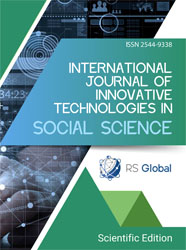COV-19 RELATED DISCOURSE GENERIC ANALYSES
Abstract
COVID-19 related discourse has been gaining widespread attention due to its extension and coverage area (geographical area, age groups, layers of society, etc.). It can therefore be argued that the problem is global and sorting it out goes far of the local medical interventions. Cov-19 related discourse, presented by authoritative persons on the press conference (which is not a coincidental area and plays an intermediary role), responsible for preventing the society from killing virus requires not only medical treatment but the real art of communication as well.
On the one hand, selecting an efficient communicative strategy and on the other, analyzing a real idea lying under meticulously chosen generic features requires generic analyses of either discourse or a text.
This paper is established on corpus based linguistic analysis, which enabled us to identify the frequency and apportioning of each discourse marker observed in target empirical material, to highlight dominant and supplementary discourse features, to strengthen hypotheses that Cov-19 related discourse or a text is hybrid. Over and above that, analyses outcome, sheds new light on generic features of COVID-19 related discourse and opens a wider scope for a socio-critical look at what responsible persons do with language and why do they do it.
References
Bhatia, Bhatia,K.V., (2002). Applied genre analysis: a multi-perspective model, Asociación Europea de Lenguas para Fines Específicos Cádiz, España Ibérica, núm, 4, pp. 3-19.
Bhatia, A. (2006). Critical discourse analysis of political press conferences. SAGE Publications. http://das.sagepub.com.
Brown, G., Yule G., (1983). Discourse analysis. Cambridge University Press, Cambridge, New York, New Rochelle, Melbourne, Sydney.
Crystal D., (1990). The English language. London. penguin books.
Cristal, D. (2016). The Gift of the Gab. New Haven: Yale University Press.
Gee, P. J., (2014) “An Introduction to Discourse Analysis” https://doi.org/10.4324/9781315819679.
Shavladze, T. (2017). Studies in Functional Stylistics course of lectures. Batumi.
Taylor, P.M. (1997). Global Communications, International Affairs and the Media Since 1945. London: Routledge.
Trosborg. (1997). Text Typology: Register, Genre and Text Type [in:] A. Trosborg, (ed.). Text Typology and Translation. Amsterdam/Philadelphia: John Benjamins Publishing Company.
Tsimpri, P. (2018). Doctor Patient communication. National and Kapodistrian University of Athens.
Woods, N. (2006). Describing discourse, A practical guide to discourse analysis. Hodder Education, Great Britain.
Neuro diversity matters. https://neurodiversitymatters.com/barking-sycamores-2022/hybrid-genre-guidelines/.
Danielle Ofri. What patients say, what doctors hear. https://danielleofri.com/books/what-patients-say-what-doctors-hear/.
Views:
174
Downloads:
127
Copyright (c) 2023 Tamta Goradze, Zeinab Gvarishvili

This work is licensed under a Creative Commons Attribution 4.0 International License.
All articles are published in open-access and licensed under a Creative Commons Attribution 4.0 International License (CC BY 4.0). Hence, authors retain copyright to the content of the articles.
CC BY 4.0 License allows content to be copied, adapted, displayed, distributed, re-published or otherwise re-used for any purpose including for adaptation and commercial use provided the content is attributed.











